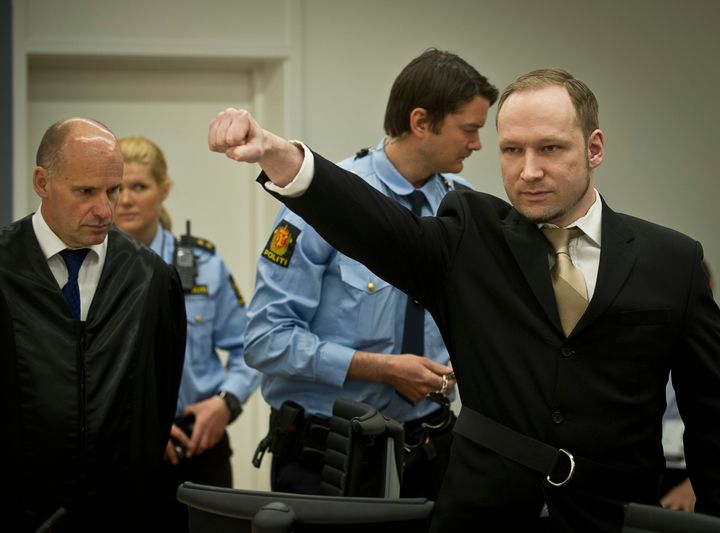
When it comes to mass murder, rehabilitation should no longer be an option.
Nearly five years ago, then 32-year-old Norwegian Anders Behring Breivik murdered 77 people—most of them teenagers—when he blew up the government center in Oslo and then went on a shooting spree on the island of Utøya. More than 300 others were wounded.
Punishment has become a taboo word in Norway, where the justice system is solely driven by rehabilitation. Breivik was sentenced to the maximum of 21-years in prison—fewer than four months for each death.
Rehabilitation has proven to work well in many cases of lesser crimes. However, Breivik didn’t steal a car or rob a bank, he bombed an occupied building and then methodically hunted down and killed 69 teenagers trapped on an island. That’s mass murder. This system in Norway is flawed in two ways. First, if Breivik is set free—which he likely will be—there is no guarantee as to the safety of the country’s citizens. Second, it shows a blatant disregard of justice for the victims.
Most would agree that Breivik deserves to rot in his jail cell for what he did. In Norway it’s not that simple. Recently, he was again given a platform when he was granted three-day hearings to complain about what he claims are inhumane conditions in prison. Last week, the court announced that Breivik won. In addition, the state has to pay his legal fees of $40,000.
Breivik is serving his sentence in a comfortable three-room apartment in a prison in southern Norway, where he enjoys a computer, television, DVD player, a game console, and plenty of newspapers and books. He also has a work desk and his own private gym.
Breivik has been kept separated from other prisoners and was only allowed limited contact with his outside supporters via mail. He argues that the isolation prevents him from socializing and spreading his political agenda with other prisoners and likeminded people outside prison. The isolation has driven him to insanity, he insisted during the hearing, and as proof he offered the fact that he’s now enjoying a seedy television series starring a Swedish princess. He also complained about being served cold coffee and meals that are “worse than waterboarding.” Although he didn’t win on all accounts, the isolation must now be alleviated.
Breivik’s sentence and treatment in prison stand in sharp contrast to the case of Dzhokhar Tsarnaev, the surviving brother who killed three people and injured 264 at the 2013 Boston Marathon. Tsarnaev was sentenced to death. The mentally ill James Holmes, who murdered 12 people and wounded 70 others in the 2012 Aurora, Colorado movie theatre shooting, was sentenced to life in prison with no chance of parole.
This is not to say that Breivik should have been sentenced to death. However, his treatment raises a bigger question about Norway’s penal laws. In a democratic society, prison serves several purposes. One is to protect its citizens from dangerous criminals. Captivity serves as punishment and gives the victims a sense of justice. The threat of incarceration also has a deterrent effect and, if sentenced, the perpetrator will have time to think about his acts and hopefully refrain from a criminal future. In many countries, including the United States, prison conditions make rehabilitation nearly impossible. No doubt, there is room for improvement of the justice and penal systems around the world. But has Norway gone too far?
Even as a convicted mass murderer, Breivik has not lost his voting rights. In September 2015, he enrolled in the University of Oslo to study political science. Although he won’t be able to physically attend classes, the university has organized an online program just for him.
Five years from now, in 2021, Breivik will likely demand his release from prison. After all, his 21-year sentence is not absolute. It only guarantees that Breivik will be detained for a minimum of 10 years. His demand for release may not be granted, but that doesn’t mean he can’t try again.
A “rehabilitated” Breivik will likely be back on the streets at age fifty-three, and with good behavior, perhaps sooner. Breivik is already preparing for his release by declaring that he no longer advocates violence—a cold statement on the graves of the dead. Those who say that Breivik will never be released are either misinformed or in denial. Not only will his rants live on, but the vision of his arrogance will remain indelible in the minds of millions of people.
Breivik’s latest hearing is a symptom of his narcissistic tendencies, which is typical in the lone wolf killer. Like U.S. lone wolf killers Timothy McVeigh and Theodore Kaczynski, Breivik wants to be taken seriously. These killers’ acts of terror were their twisted way of communicating with a world that wouldn’t otherwise listen. The lone wolf has a need to be heard and recognized for his importance, but McVeigh and Kaczynski did not receive this recognition at their trials. Norway, however, has given Breivik exactly what he wanted. Although he won again in court last week, it won’t be the last time we hear of him. Breivik won’t let us forget him.
Many Norwegians, including former Prime Minister Jens Stoltenberg, have expressed that Breivik’s case was handled with a great deal of dignity. Perhaps in time, dignity may not be enough to keep Norwegians safe.
Norwegian born Unni Turrettini is an attorney and the author of The Mystery of the Lone Wolf Killer: Anders Behring Breivik and the Threat of Terror in Plain Sight, published by Pegasus Books.
